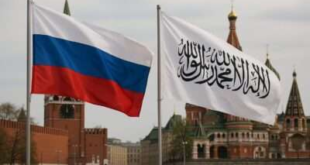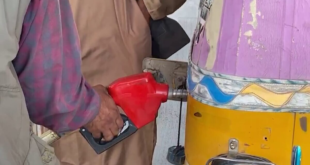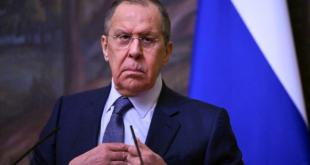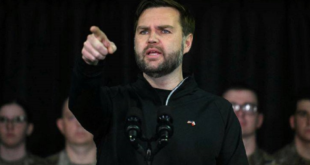KABUL, Afghanistan — Faizal Karim, a sophomore at the National Military Academy here, stood outside a classroom holding his English-language homework assignment. For a group of cadets nearby, a lecture in physics was ending.
Bright-eyed, articulate and in a four-year course modeled after the United States Military Academy at West Point, Mr. Karim is a hopeful face in Afghanistan’s nascent national security forces. He is 21 and rejects the Taliban. “I want to serve my country’s people,†he said, speaking in confident English.
But several days before, an altogether different side of Afghanistan’s security forces was evident when a Dutch and Afghan patrol visited a police compound in Oruzgan Province. The police officers there were cultivating poppy within the compound’s walls, openly participating in the heroin trade. The Afghan Army squad that visited them, itself only partly equipped, did nothing.
These wildly contrasting glimpses of Afghanistan’s security forces illustrate the mix of achievements and frustrations that have accompanied international efforts to create a capable Afghan Army and a police force after decades of disorder and war. They also underscore the urgency behind the renewed push to recruit and train these units, which is now under way with an influx of equipment and training approved by the Bush administration last year.
Yet, even after several years of efforts to create new army and police units, it remains difficult to fully assess their readiness. Some units, especially in the army, are motivated and much better equipped than any Afghan forces were five years ago. Others, especially in the police, remain visibly ragtag, underequipped, disorganized, of uncertain loyalty and with links to organized drug rings.
American officials say it will take at least a few years before most of the Afghan forces become more ready and reliable, and perhaps a decade before they are capable of independent operations. But they also say that the resources and plans are now in place to make such ambitions possible.
These ambitions are important because American military officials say a principal element of any Western exit strategy from Afghanistan will be to create competent national security forces. Such forces are regarded as necessary to contain, and eventually defeat, the Taliban insurgency that expanded in 2006, and to provide stability in regions where the government’s influence remains weak.
To this end, the United States plans to spend $3.4 billion this fiscal year on army and police units here, according to the Combined Security Transition Command-Afghanistan, the American-led military unit that supervises the development of the security forces.
Defense officials hope to spend an additional $5.9 billion during the next fiscal year. Plans call for indigenous forces to grow to 132,000 soldiers and police officers, or even as many 152,000, from about 100,000 that exist on paper now, and to equip them with helicopters, fixed-wing aircraft and armored vehicles, as well as small arms from NATO.
Signs of new programs are apparent within the capital and out. The first armored vehicles have begun to arrive. At the military academy, where Mr. Karim studies, an engineering laboratory was recently built, and construction is visible on dormitories, an infirmary, a dining center, a gymnasium and more.
But several Western officers cautioned that it would take at least three years before the equipment and training were in place, and that much must be done to improve units, which in many cases remain ill led or corrupt, both in the traditional manner of shaking down citizens and in the now pervasive poppy trade, which undermines rule of law.
There are questions as well about whether Afghanistan’s government can afford to maintain the larger and more heavily equipped forces that it is soon to receive, and whether increases in security spending are out of proportion with efforts to rebuild the country’s civilian infrastructure, another component of counterinsurgency planning.
For now, however, military officials and outside analysts say the immediate steps are necessary. “Regardless of what happens in Afghanistan, the security forces need to be beefed up,†said Steven Ross, a research consultant for the Post-Conflict Reconstruction Project at the Center for Strategic and International Studies in Washington. “It was highly underinvested in the first years after 2001, and almost everyone sees the money coming in from the big supplemental as a positive.â€
As the money flow quickens, the various army and police forces on the ground display a widely varying range of skills and abilities. For example, during a week of foot and vehicle patrols in Oruzgan Province, the Afghan Army captain who led the patrols, a 25-year veteran of wars against the Soviet Union and the Taliban, was seasoned, decisive and skilled. But the 12-man unit he led lacked any visible sergeants. The captain led all the soldiers himself, giving directions to each man.
In a Western unit, several noncommissioned officers would be leading small teams within a unit of similar size. Afghan and American officers said the absence of this core of enlisted leadership had stemmed from high rates of illiteracy and the enduring influence of the Soviet Union’s training of its own Afghan proxies, which emphasized centralized leadership.
The squad’s equipment was also uneven. The soldiers wore Kevlar helmets and fragmentation vests, which proved their value in an ambush when a rocket-propelled grenade exploded near two soldiers, who were wounded only slightly. But on the same foot patrol, an Afghan soldier left the base with a rocket-propelled grenade launcher without a sight, which drastically reduced his accuracy when he came under fire.
Other equipment shortages were evident days later on a mounted patrol, when the squad’s trucks were equipped with frames for machine guns, but did not have mounts so the weapons could be attached. The guns were lashed onto the trucks with twine, limiting their range and mobility.
The police units in the province were in worse shape, and more poorly led. At many remote posts few officers were on duty, and officers wore civilian clothes, not uniforms.
Many posts also have separate tribal allegiances, and do not cooperate tactically, Western military officials said. “They just have their own islands, and protect their families, and protect their villages, and that is it,†said a Dutch officer, Captain Ninke. (Dutch military rules allow most deployed soldiers to be identified only by rank and first name.)
The Dutch were also trying to encourage the local police to act against a group of Taliban who had stolen a police truck. Two local chiefs, Abdul Karim and Sadiq, said their general had told them that whoever captured the truck could keep it, so they were trying to steal the truck back, rather than kill the Taliban driving it.
“Do you know how hard it is to capture a truck from the Taliban without damaging it?†Sadiq said.
Poppy cultivation was also widespread at, or near, the police posts. At best, the police were tolerating the trade, the Dutch said. At worst, they were part of it. American officials said, however, that more experience and training could turn many problems around.
Maj. Gen. Robert E. Durbin, who leads the American effort to reform Afghanistan’s security forces, acknowledged in an interview that poppy production was widespread. But he said that Afghan Army units, which have been working with American forces for several years, were much less involved in it than were the police. With more training, he said, the police involvement in the drug trade should decline.
“If we can do it for the army, we can do it for the police,†he said.
 Eurasia Press & News
Eurasia Press & News



